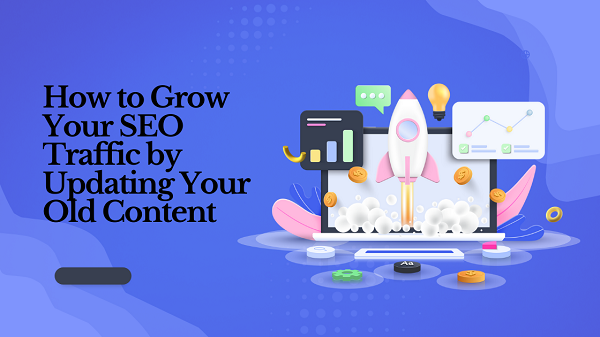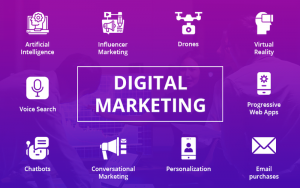How to Grow Your SEO Traffic by Updating Your Old Content

Your traffic starts going down. Today We will going to teach you how to grow your SEO traffic by updating your old content. There is something you must understand about SEO. It all comes down to marginal advantages. One object will not provide you with a silver bullet or a bullet that will enable you to defeat all of your competitors. Numerous little items add up to a large sum.
Also Read:- How To COMPLETELY RECOVER Your Lost SEO Traffic
And title tags are one of those little things that really add up, so I’ll demonstrate how to optimize them for maximum traffic. Then, I’ll demonstrate 10 adjustments you can make to your title tag to significantly increase your SEO traffic.
Here’s a comprehensive guide on how to grow your SEO traffic by updating old content:
- Identify Content Worth Updating:
- Use tools like Google Analytics to find posts that used to get good traffic but have seen a decline.
- Prioritize posts that rank on the second page or at the bottom of the first page of search results.
- Reassess Your Keywords:
- Research the primary and secondary keywords for the post. Are there new terms or phrases that have gained popularity?
- Tools like SEMrush, Ahrefs, or Google’s Keyword Planner can help.
- Improve Content Quality:
- Add more depth, details, or recent data to make the post more comprehensive.
- Correct any outdated information, stats, or references.
- Add Multimedia:
- Incorporate relevant images, infographics, videos, or charts to enhance the user experience and increase the time spent on the page.
- Optimize Meta Data:
- Re-evaluate and potentially rewrite the title tag and meta description to make them more click-worthy and relevant.
- Optimize for Featured Snippets:
- Structure your content so it answers specific questions. This can increase your chances of getting a featured snippet in Google.
- Check for Broken Links:
- Use tools like Broken Link Checker or Screaming Frog. Replace or remove dead links and add new, authoritative references.
- Improve Internal Linking:
- Link to your new content from the old post and vice versa. This helps in distributing page authority and keeping the user engaged.
- Update the Publish Date:
- If your CMS allows, update the publish date to reflect the recent update. This shows users and search engines that your content is current.
- Promote Updated Content:
- Share the updated post on your social media channels, email newsletters, and other platforms to generate immediate traffic and engagement.
- Monitor Results:
- Track changes in organic traffic, rankings, and engagement metrics for the updated post. Tools like Google Analytics and Google Search Console can help.
- Encourage User Engagement:
- End your post with a question or call to action to boost user comments, shares, and interaction.
- Review Comments:
- If users have left comments, questions, or feedback on the post, use these as a guide to making further improvements.
- Mobile Optimization:
- Ensure that the updated content is mobile-friendly, as a significant portion of users may access it from mobile devices.
- Optimize Page Speed:
- Make sure the updated post loads quickly. This includes optimizing images, leveraging browser caching, and reducing server response times.
- Consistency:
- Regularly review and update old content. Make it a quarterly or bi-annual routine.
Google uses user metric data. It’s not just about the number of backlinks you have or the quality of your website’s code. If your copy is more engaging, people will click to read it and then visit your website.
Then how do you scale your clicks? Because you might not have the same number of Twitter followers as I do or as some of the other people, but there must still be methods. And I’m going to break down 10 ways you can modify your title tags to get more views without having a large Twitter following or telling people to click on my results.
This formula is a long-term strategy for obtaining these views. Therefore, you can achieve a higher ranking without building additional links or optimizing your code. So allow me to outline ten strategies for you.
Make your title tags into queries as your initial title modification.
Now, I would not recommend using 15-word title tags because there is insufficient space for keywords. However, you may use 30, 40 characters. Once the number of characters reaches 50 or 60, the click-through rate decreases despite the ability to include more keywords.
In addition, the click-through rate increases by 45% when the exact query is included in the URL.
Power words include words like effortless, simple, and beautiful, as well as any word that simply describes what you are attempting to convey. And the more adverbs and powerful phrases you use, the better off you will be.
Additionally, titles that contain emotions have a 17.3% higher click-through rate than titles that do not contain emotions. Therefore, the more emotion you can convey, the better off you will be.
And here is one of my favorites: a 5.8% increase in CTR. In the event that you have a meta-description. This is one of my favorites due to its simplicity. Many individuals do not include meta descriptions on their web pages. I recognize that this sounds absurd, but it is true.
And titles with years have a 4.9% higher average click-through rate. For instance, if I have a piece on how to establish a blog. If I include the year 2025 in how to start a blog in 2025, it may generate more views than if the year is omitted.
And inquiry can boost your click-through rate by approximately 5.9%.
Education-related titles receive 10.4% more visits. Although this is presumably not particularly instructive or relevant to how to rank first on Google. How to properly install a commode. These are examples of informative, educational publications.
And my final piece of advice for you is to examine the ad copy of those who are running advertisements. Because these individuals are required to optimize for quality score.
Google desires them to have a high number of clicks because it generates revenue on a cost-per-click basis. Therefore, if their titles are terrible, they receive fewer visits, which results in less revenue for Google.
Learn from their ad copy because it can help you generate superior titles. And once you’ve made these adjustments, it will take approximately 30 days before you begin to see results. Therefore, you must be tolerant.








